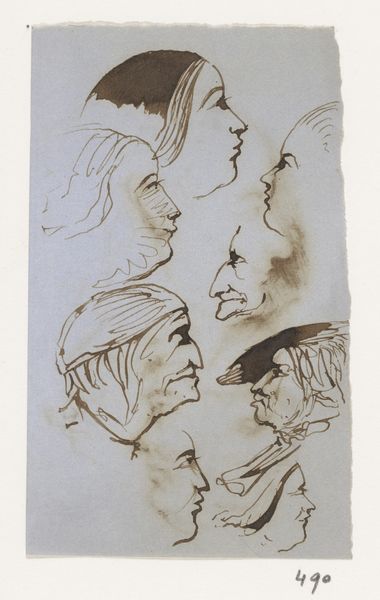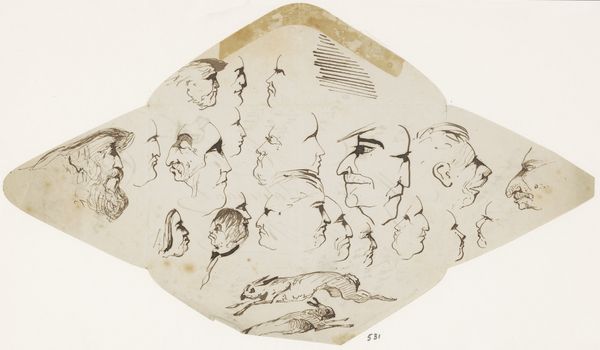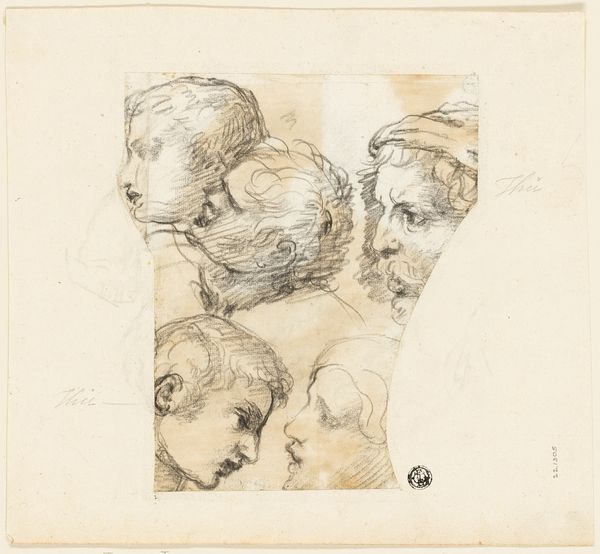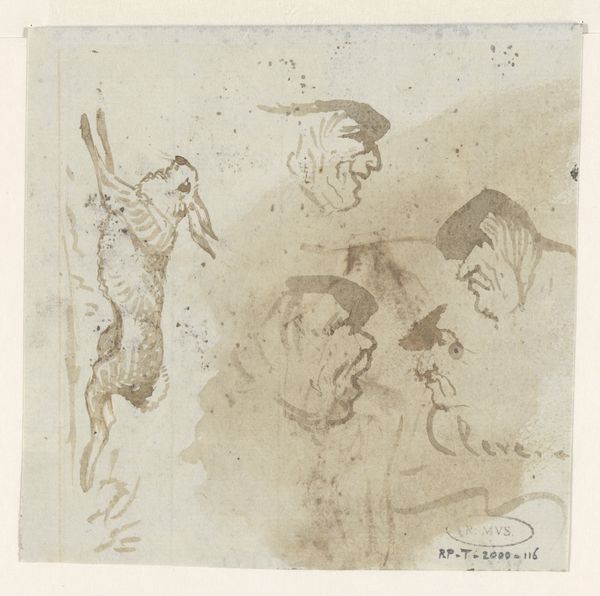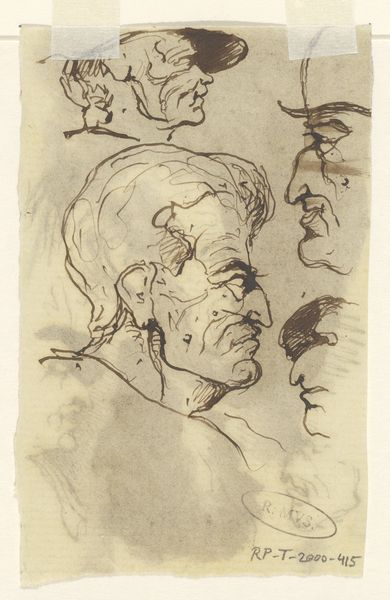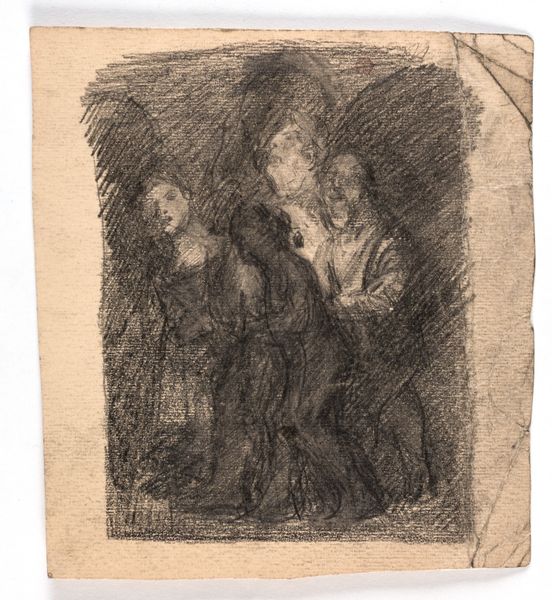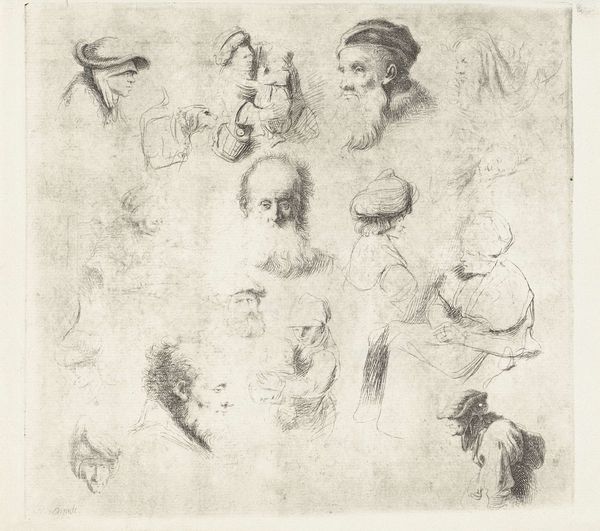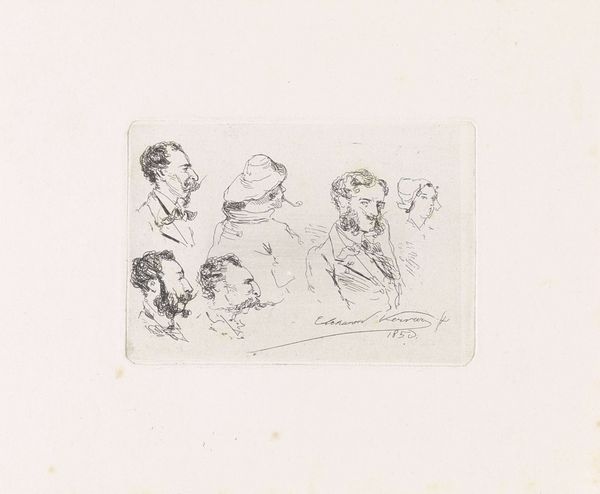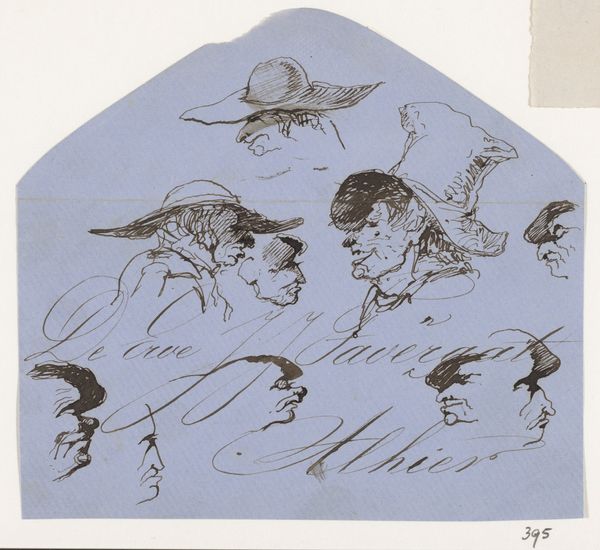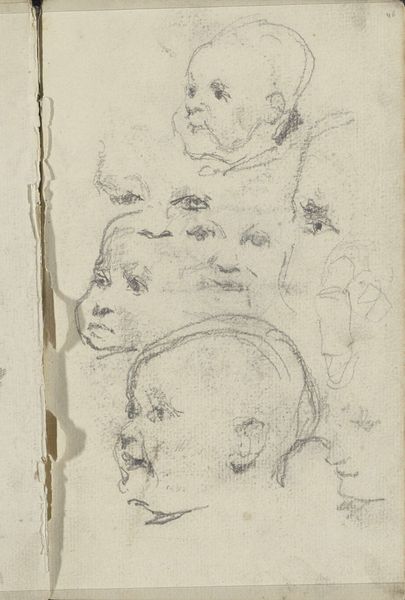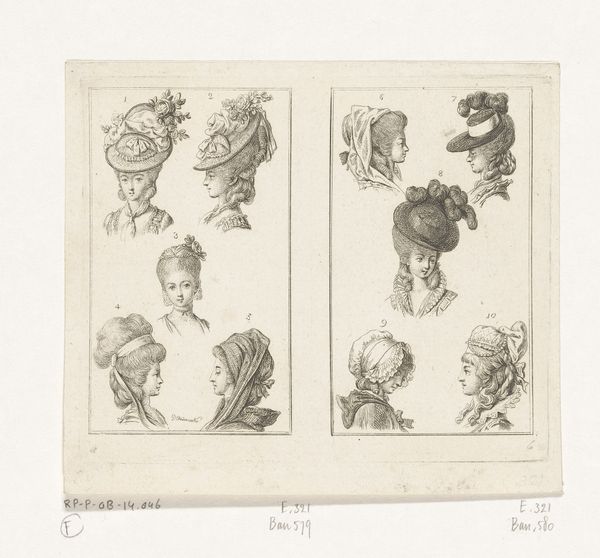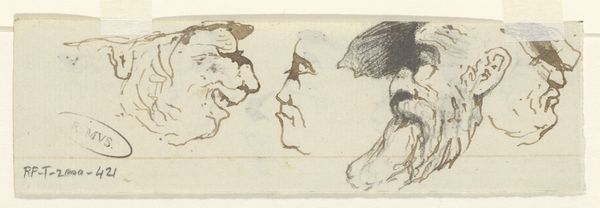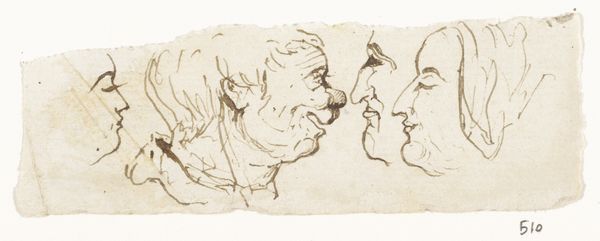
drawing, pencil
#
portrait
#
drawing
#
amateur sketch
#
toned paper
#
light pencil work
#
pencil sketch
#
incomplete sketchy
#
figuration
#
personal sketchbook
#
ink drawing experimentation
#
pencil
#
sketchbook drawing
#
pencil work
#
sketchbook art
#
realism
Dimensions: height 100 mm, width 92 mm
Copyright: Rijks Museum: Open Domain
Curator: Here we have "Koppen," a drawing done in pencil by Johannes Tavenraat, likely created sometime between 1840 and 1880. What strikes you first about it? Editor: There’s a stark immediacy to this page of head studies; the rough edges of the paper, the varying intensity of the pencil strokes. It feels like we’re peering directly into the artist's sketchbook. What can you tell us about its journey? Curator: Well, given that the Rijksmuseum holds it now, we can trace its journey through collections and acquisitions. It's important to consider how the institution's choices in acquiring and displaying art influence public perception, especially considering that drawings, being preliminary works, weren't always valued in the same way as paintings. Editor: Absolutely. And how do we contextualize the individuals portrayed? They appear predominantly white, typical for portraiture of that era. It forces us to confront who was considered worthy of representation and preservation. Curator: Exactly. Tavenraat was working in a context where the art world largely catered to the upper echelons of society. Analyzing portraiture from this period involves examining how power dynamics shaped the gaze, literally who got to be seen and how. Editor: The rapid strokes give such vulnerability. The slight asymmetries in their features disrupt idealizations, hinting at individuality beyond the constraints of societal expectations and what has come to be standard practice in art history. Curator: And that gets me thinking, how can we use these incomplete studies to question notions of artistic "genius?" Maybe this was a quick study or pedagogical work and perhaps these incomplete sketchy faces serve as witness to a new social class. Editor: Right. By decentering traditional art-historical narratives focused on masterful execution, we create space to understand artmaking as part of broader cultural practices where class and gender intersect. Curator: This quick sketch actually underscores the necessity for more inclusivity. What was captured, what was dismissed, how the sketchbook itself becomes an archival battleground of artistic labor—these become essential questions. Editor: So, rather than passively consuming "Koppen", let’s use this intimate sketchbook page as a mirror. Who do we choose to see and how can we support equitable modes of looking. Curator: A worthwhile takeaway indeed, to carry forward while enjoying and reflecting on artwork, here and beyond.
Comments
No comments
Be the first to comment and join the conversation on the ultimate creative platform.
